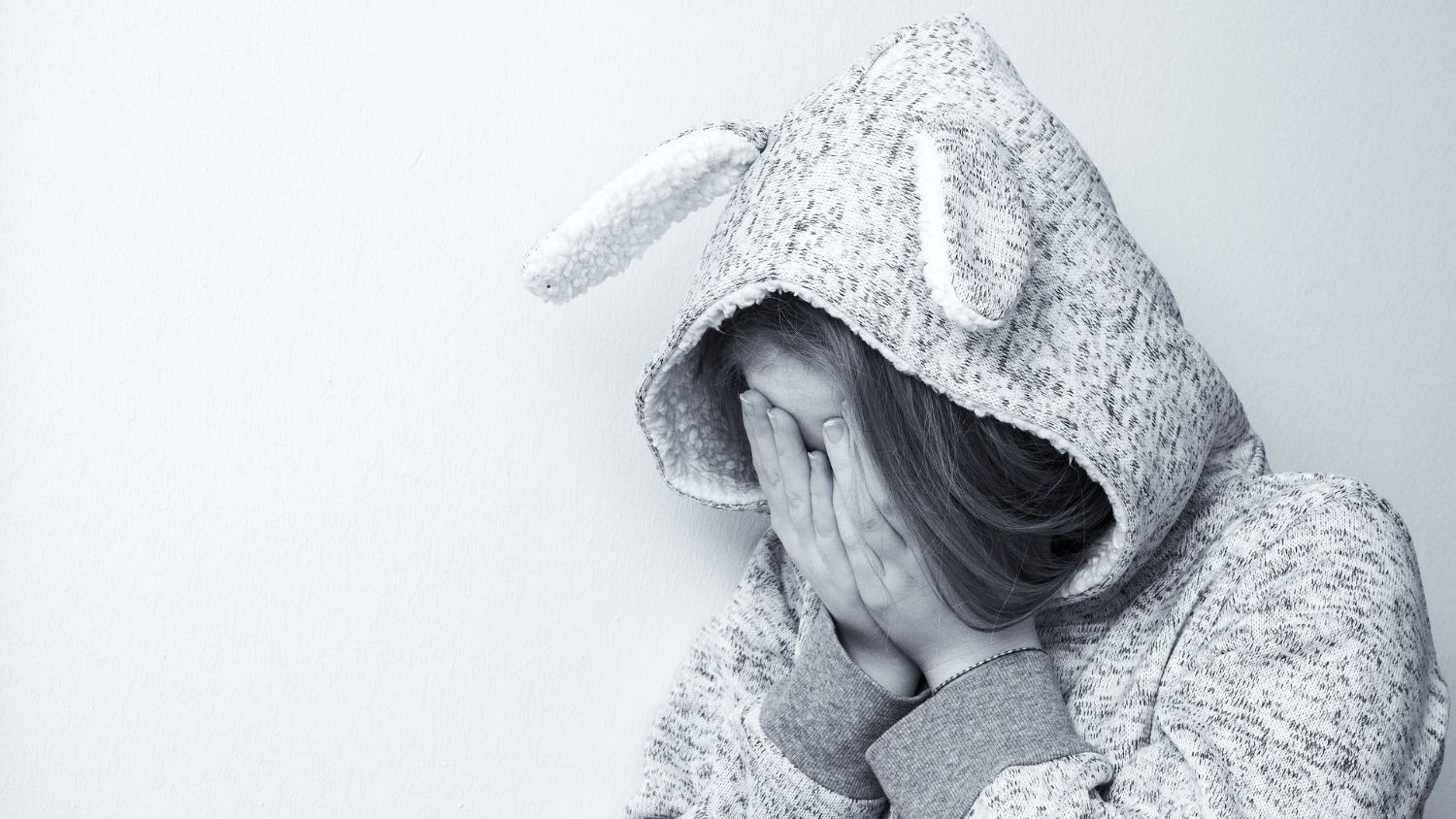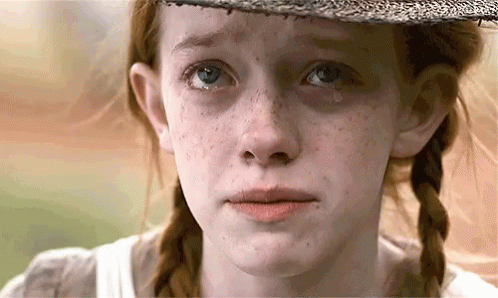‘I’m a kindred spirit to Anne of Green Gables’ Anne Shirley. When I feel like crying, you see it in my cheeks, in the flicker in my eyes, and sometimes you see it in my bottom lip.’
Kura Rutherford writes about children’s literature’s reflection of our ideas about crying, and suggests it could be a place of both social change and solace.

Do you remember the first time a character cried in a book you were reading?
Mine is a story my mum used to read us, Greyling by Jane Yolen. A man and woman live on a lonely island, and they long for a child. One day the man finds a seal on the beach and brings it home, where the seal transforms into a boy – a long-wished-for son for the couple. They live happily, until one day he dives into the sea to save his father from drowning, and as soon as he enters the water, he becomes a seal again.
As Geoff Dyer says in Blues for Vincent, ‘works of art that affect you deeply are seldom quite as you remember them’, but it’s the weeping I remember most, how the woman wept and how the couple consoled each other after the selkie slipped back into the depths of the stormy ocean.
In the complex process of reading, we are interpreting and imagining, but we are also clue-hunting.
In the complex process of reading, we are interpreting and imagining, but we are also clue-hunting. Not least, we are hunting for clues about social conventions – learning how to ‘be’. How to be when something happy happens, how to be when we are bored, how to be when grief comes our way … how to be when a feeling comes over us, happy or sad, and makes us want to cry.*
I recently reread Noel Streatfeild’s 1930s children’s classic Ballet Shoes. Reading it as an adult, I was especially struck by Streatfeild’s matter-of-fact portrayal of crying. Cook was crying, simply because ‘Cook liked to cry’, and when young Pauline Fossil burst into tears at the dinner table, ‘everyone was surprised, except Doctor Jakes, who said it was quite a natural thing to do.’
The story reminded me of a moment years ago when I was reading a Berenstain Bears book to my eldest daughter and one of her friends. In the story, Mama Bear, overwhelmed by the family schedule, burst into tears. My daughter’s friend flushed red and jumped out of her chair as if she had just caught someone out in a cricket match.
‘Ha! But mums don’t cry,’ she said, punching the air.
In the story, Mama Bear, overwhelmed by the family schedule, burst into tears. My daughter’s friend flushed red and jumped out of her chair … ‘Ha! But mums don’t cry,’ she said.
My daughter was quick with her reply. ‘Oh, yes, they do! My mum cries on the phone and on the back step.’
Truth right there. I do cry sometimes.
I’m a kindred spirit to Anne of Green Gables’ Anne Shirley. When I feel like crying, you see it in my cheeks, in the flicker in my eyes, and sometimes you see it in my bottom lip. But when my lips start to quiver, I scan the room for the quickest escape to a phone or back step. Because heaven forbid if my inner-Anne spills out into the world.

That complicated relationship we have with crying. Because despite medical websites and mental-health advocates telling us that crying is healthy, that the ‘process of opening into yourself, it’s a lock and key’, releasing stress and reducing suffering, we still tend to avoid it at all costs.*
Children’s literature has an integral part to play in helping children understand that there is no shame in crying.
Some children’s classics highlight a culture of emotional restraint, as Laura Ingalls Wilder described in Little Town on the Prairie, where frontier life in the 1880s meant everyone was on guard from the ‘danger of sharing your feelings.’ As Ma said: ‘Grown up people must never let feelings be shown by voice or manner.’ In many ways, I wonder if we still subscribe to this notion.
Some of the classics, like Ballet Shoes, advocate that crying is just part of life.
Yet some of the classics, like Ballet Shoes, advocate that crying is just part of life. Anne Shirley herself, in Anne of Green Gables, published in 1908, takes it another step and tells us it helps us feel better. When Marilla comforts her in the night after Matthew’s death, with a ‘There – there – don’t cry so, dearie. It can’t bring him back. It – it – isn’t right to cry so’, Anne steps in with, ‘Oh, just let me cry, Marilla. The tears don’t hurt me like the ache did. [Just] stay here for a while with me and keep your arm around me …’
A recent publication, The Girl Who Brought Mischief by Katrina Nannestad, published in 2013, mirrors Anne Shirley’s sentiment. A girl named Inge goes to live with her grandmother on a tiny island, Bornholm in Denmark, after her mother dies. Like Anne, Inge gradually begins to soften her grandmother’s tough exterior, and the climax of the story is the moment when Grandmother gives in to her emotions and cries:
‘Grandmother wraps her arms gently around me. She doesn’t say stupid things like, “You will be ok” or “You need to be brave and strong”. She doesn’t squeeze me tight and pretend that she can protect me from this horrible grief. She just lets me snuggle in to her warm, squishy body and sob. And she helps me along by weeping a little too.’
While it is rare to see a boy cry in a book, New Zealander Vince Ford’s award-winning 1999 series 2Much4U brilliantly captures a local vernacular, and also reminds us that emotional restraint is very much part of our country’s social code. When the young male narrator says, ‘I could feel my face going red and tears starting to well up at the corners of my eyes’, his adult friend slaps him on the shoulder, saying, ‘Don’t get worked up, son’.
…Emotional restraint is very much part of our country’s social code.
In the recently published New Zealand adventure story The Mapmakers’ Race by Eirlys Hunter, we might be beginning to see a different picture, though. During their epic adult-free adventure, four-year-old Humphrey cries from exhaustion and homesickness: ‘He was brave, but tears kept trickling down his puffy face’. While this description could go either way, perhaps Hunter is, in the matter-of-fact tone of Streatfeild, telling us that, after all, bravery and crying are not mutually exclusive.
*
Books work on us at so many levels. Anne Shirley was on to something when she set Marilla straight about crying. May Anne keep on working her magic, a century later.
And hopefully, with the help of literature, this generation of children will grow up knowing that crying can help take the ache away – for a while, at least – and that it helps to wrap our arms around each other until the pain goes, and say, ‘It’s okay to cry. I’m listening, and I’m here with you’.

Kura Rutherford
Kura Rutherford (Te Rārawa, Ngāpuhi) is a school librarian, writer and editor, who lives in Tāmaki Makaurau. She grew up in Hokianga and Grey Lynn, before moving to Hawke’s Bay for 20 years with her husband, Dominic, to bring up their three daughters. She worked for 10 years in public libraries in customer service and community roles before becoming the sole charge school librarian at Taikura Rudolf Steiner School in Hastings. Now having returned to Tāmaki with her family, she works in the same role at Michael Park School in Ellerslie. She has been connected to Steiner education since she was 23 when she and her husband worked for a year at Hōhepa Farm in Hawke’s Bay, and all three daughters have attended Steiner schools. Kura’s writing focus is on health, education and literature, and she has written for The Sapling, Good magazine, EBSCO databases, Magpies magazine, and craft magazine Extracurricular. She has a special interest in supporting organisations in their te reo Māori strategic planning and development aspirations.



